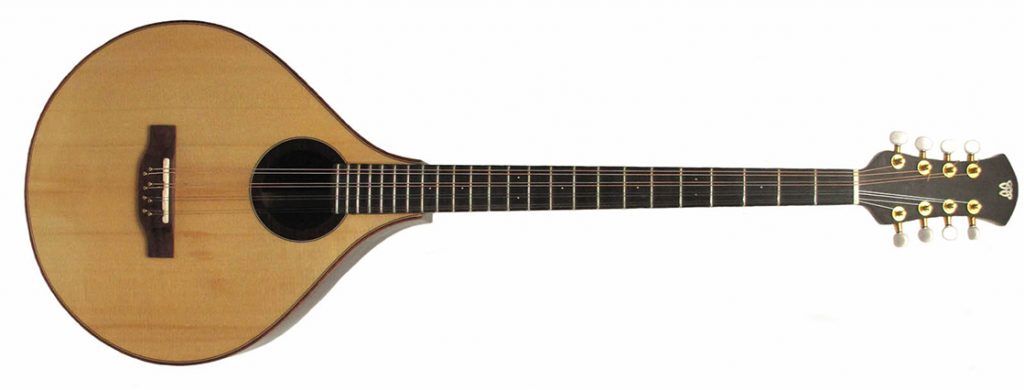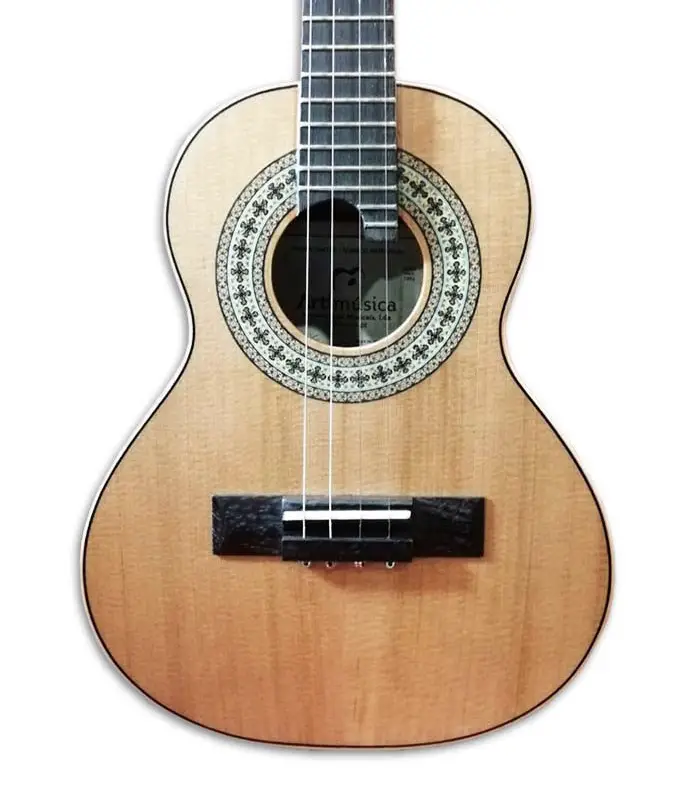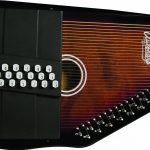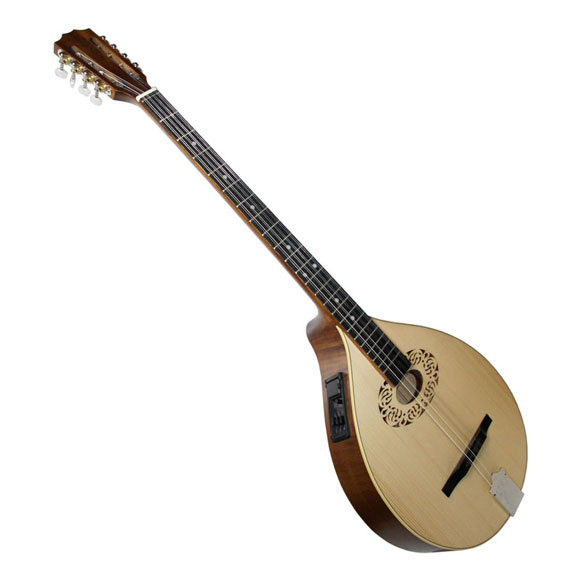What is a Cittern Instrument? – Learn more about the Cittern
Folkstrings.com is reader-supported. When you buy through links on our site, we may earn a small commission.
If you have ever been to a Renaissance Faire or perhaps put on your own production of Shakespeare’s “Twelfth Night”, you may be familiar with the cittern. But what is a cittern instrument? Is it simply another name for a lute, or is it something different entirely?
Hopefully, this article will help you understand more about the Cittern instrument and help you decide if this is the instrument for you.
Table of Contents
- Is a Cittern a Lute?
- What is the cittern instrument made of?
- Is a Cittern a Guitar?
- Is a Cittern an Archlute?
- How do you tune a cittern?
Is a Cittern a Lute?

Although the two instruments look very similar, they are actually quite different in their construction and origin. The modern lute was originally introduced as an improvement over the medieval instrument called the oud, which existed around 1000 AD.
It served as an accompaniment to singers and poets as well as solo performers. Its construction was simple: a wooden soundboard with strings that were plucked by hand or with plectrums attached to the fingers. It was strung with four or five strings and then another four or five strings would be added as a ‘chanterelle’.
The lute was not a popular instrument in the Middle Ages, but it began gaining popularity in the Renaissance period. Lutes have been used throughout Western musical history for almost 700 years, being modified and improved along the way.
***
What is the cittern instrument made of?
What are the materials that are usually used to make this?
The cittern is an instrument made out of wood, metal strings and a pick. The way you pluck the strings can vary depending on what country you’re in. In some countries, people will play with their fingers while others use picks or small chips of wood.
Many types of wood have been used to create instruments including ash, holly, maple and mahogany. Other materials have also been known to be used for instrument building such as plastic, steel and even glass.
Is a Cittern a Guitar?

Although some people may think of guitars when they hear “cittern”, this is not really an accurate association. The cittern shares more similarities with the guitar than just its name: both instruments are plucked stringed instruments from Europe that share similar physical qualities.
However, there are actually some important differences between the two. First of all, the construction of a cittern is similar to that of a lute: it has a long neck with metal strings running from peg to bridge.
The tuning pegs of guitars face upwards, while the tuning pegs on a cittern face down towards the player. The number of strings differs between these two instruments as well. A common six-string guitar has four or five courses, which means that there are four or five pairs of closely wound strings on the instrument. In comparison, there are seven single metal strings on a cittern and they run across three courses (groups) tied to multiple frets for different pitches. Furthermore, the lowest string on a guitar is typically thicker than its higher-pitched counterparts, but the reverse is true for a cittern.
Is a Cittern an Archlute?
Although originally conceived as an improvement over the lute, the cittern shares many similarities to it. It was first developed by adding metal strings to a lute and putting frets on its neck.
As such, there are considerable differences between the two instruments that could not be resolved by simply having fewer courses of strings or playing with plectrums attached to the fingers: these would only be considered improvements if they improved upon the design of the instrument. The construction and design of both instruments were so different from each other that through history, we ended up with two distinct names for two very similar musical instruments: guitar and cittern!
The cittern is believed to have been created in the 1400s, possibly by adding metal strings to a lute. However, its earliest mention was not until 1496 when it appeared in an inventory of items belonging to King Louis XII of France. This lists seven citterns along with only two guitars and only one lute indicating that it must have been considered an important instrument at the time.
The cittern shares many similarities with the guitar, but perhaps because of their different construction materials (steel for strings versus nylon or gut for strings) or how they are played (with picks attached to fingers versus plucking), both instruments have gained separate identities over time.
Although they seem similar on the surface, their design and sound makes them very different instruments that were essentially wedded together to create a new musical instrument: the cittern!
How do you tune a cittern?
The string intervals of a cittern vary widely depending upon the tuning schema. The most common tuning schema is that of standard guitar tuning, which includes six courses consisting of four strings each: EADGBE. However, citterns can be tuned in different ways, such as four courses with three strings each (tuned to BEADGC), and five courses with two strings each (tuned to BEADEB).
This video may be of help:
Author Profile
-
Daniel Johnstone is an English writer with a love for stringed instruments from around the world.
He shares his love for these instruments through his writing for folkstrings.com, a website dedicated to all things related to folk string music.
Daniel's passion for music started at a young age, and he has since become an accomplished musician, playing guitar, cavaco, and recently, the harp.
His dedication to learning and sharing his knowledge of stringed instruments is evident in his insightful and engaging blog posts. Whether you're a seasoned musician or a beginner, Daniel's writing is sure to inspire and entertain you.
When he's not playing music or writing, you can find Daniel exploring new instruments and seeking out new sounds to share with his readers.
Latest entries
 AutoharpApril 4, 2024What Is the Autoharp Made Of: Exploring Its Materials and Craftsmanship
AutoharpApril 4, 2024What Is the Autoharp Made Of: Exploring Its Materials and Craftsmanship AutoharpApril 4, 2024Is Autoharp Easy to Play? Unveiling the Truth for Beginners
AutoharpApril 4, 2024Is Autoharp Easy to Play? Unveiling the Truth for Beginners AutoharpApril 4, 2024What Is an Autoharp Worth? Your Guide to Pricing and Value
AutoharpApril 4, 2024What Is an Autoharp Worth? Your Guide to Pricing and Value AutoharpApril 4, 2024Are Autoharp and Zither the Same Thing? Unraveling String Instrument Myths
AutoharpApril 4, 2024Are Autoharp and Zither the Same Thing? Unraveling String Instrument Myths
Affiliates:
This post may contain affiliate links that at no additional cost to you, the site may earn a small commission. We only recommend products we would use ourselves and all opinions expressed on this site are our own.
Accuracy Advice:
While we strive to provide up-to-date and accurate information, the content in this article may not reflect the most current research or medical guidelines. We encourage readers to do further research and consult with professionals for more personalized advice.
Our Recommendations:
The products and services mentioned in any of our articles are recommended based on our independent research and personal experience. We are not sponsored by any company. We aim to suggest products and services we believe are of high quality and could be beneficial to our readers.


